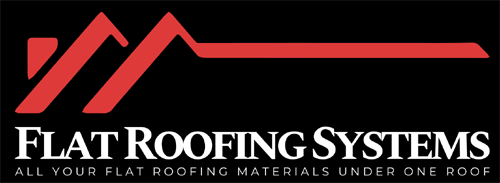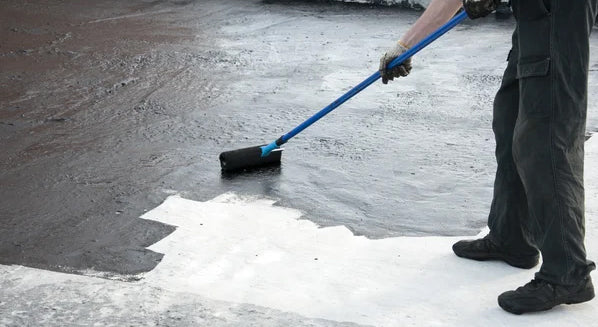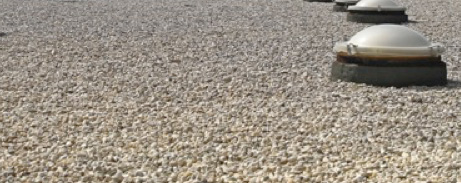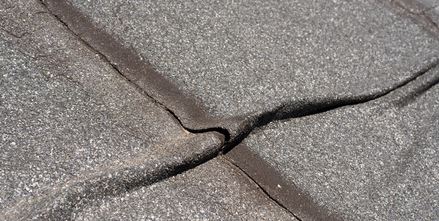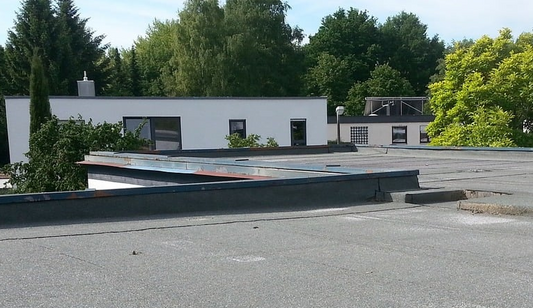Introduction
The construction industry is witnessing a significant shift towards liquid applied roofing solutions, sparking considerable interest among building owners and managers.
As we explore the advantages of liquid applied roofing, it becomes clear why it is becoming the go-to solution for many roofing projects.
Key Points
- Liquid applied roofing is gaining popularity due to its energy efficiency, low maintenance requirements, and cost-effectiveness compared to traditional roofing methods.
- The global market for liquid roofing is projected to reach £38 billion by 2026, driven by increasing demand for innovative roofing solutions. The UK liquid roofing market has grown nearly 70% in the past 5 years.
- Liquid roofing offers benefits such as accommodating building movement, withstanding harsh weather, eliminating fire risks from hot works, enabling faster and less disruptive installation, and providing a lifespan of up to 25 years.
- Liquid waterproofing systems improve safety by eliminating risks like burns and fire hazards associated with hot melt methods. They are also more eco-friendly due to reduced waste and energy use.
- The versatility of liquid applied roofing in addressing complex roofing challenges, its exceptional elasticity and durability, and the increasing availability of expert advice and high-quality products are key factors driving its surging popularity as the future of roofing.
Market Growth and Trends
The liquid roofing market is experiencing substantial growth, with the global market expected to increase from €5.1 billion to €8 billion by 2026.
In the UK, liquid waterproofing is the fastest-growing sector of the flat roofing market, having grown at a rate of nearly 70% over the past 5 years. This upward trajectory is expected to continue as the construction industry embraces innovative solutions to stay ahead of the curve.
Benefits and Advantages
The growing popularity of liquid roofing can be attributed to its numerous benefits and advantages.
Liquid roofing is considered highly energy efficient and requires little maintenance, providing fast curing and waterproofing immediately upon application. It is also safer and easier to install, eliminating the need for hot works and minimizing disruption to buildings.
The ability of liquid roofing to accommodate building movement and withstand harsh weather conditions makes it an excellent solution for extending roof life and lowering maintenance costs.
Installation and Application
Liquid roofing's ease of installation and application further contributes to its popularity.
- Unlike traditional roof refurbishments, installing a liquid waterproofing system requires less-skilled labour, making it a more cost-effective solution.
- The application process involves applying a liquid coating to the surface of the flat roof, which cures to form an elastomeric waterproof membrane.
- This membrane can stretch and return to its original shape without damage, accommodating building movement.
- Liquids can be applied over most traditional roofing materials, including felt, asphalt, bitumen, and concrete, making it a versatile solution for various roofing needs.
- High-quality materials used in liquid waterproofing have been independently tested, verifying their performance and ensuring a reliable outcome.
Cost-Effectiveness and Sustainability
Financial prudence and environmental consciousness are crucial considerations for building owners and managers, and liquid roofing delivers on both fronts.
By restoring existing roofs, liquid roofing saves on costly replacement costs, making it a cost-effective solution.
With a lifespan of up to 25 years, liquid roofing reduces the need for frequent repairs and replacements, saving money and reducing waste by eliminating the need to dispose of old roofing materials.
Moreover, liquid roofing is suitable for use in green roof systems, making it a sustainable option for environmentally conscious building owners.
Safety Benefits of Liquid Waterproofing
The application of liquid waterproofing systems significantly boosts on-site safety by eliminating the risks associated with traditional hot melt methods.
Liquids are applied cold, eliminating the need for naked flames and hot melt, thus reducing the risk of scalding, fire hazards, burns, and damage to surrounding structures and materials. Safer working conditions lead to reduced accidents and injuries, contributing to a more efficient and productive work environment.
Eco-Friendly Waterproofing Solutions
Prioritizing safety through the use of liquid waterproofing systems also contributes to a more sustainable future.
Liquid-applied products are more eco-friendly than other systems due to reduced waste and energy consumption. They minimize the need for dismantling and re-applying existing roofs, reducing excess material waste and time on site.This approach also reduces the carbon footprint of construction projects.
Additionally, liquid waterproofing systems can be used over existing roofs, eliminating the need for removal and disposal of old materials.
Time-Saving and Cost-Effective Advantages
Streamlining construction projects with liquid waterproofing systems can substantially boost efficiency and profitability.
Cure times can be as fast as 20 minutes, allowing for single-day project completion. This enables contractors to complete projects quickly, reducing labor costs and time on site, leading to increased revenue and profitability.
Fast project completion also enables contractors to respond quickly to new business opportunities. The reduced project duration and fast curing times make liquid waterproofing systems a cost-effective solution for construction projects, allowing contractors to optimize their workflows and maximize their earnings.
Tackling Complex Roofing Challenges
Liquid waterproofing systems offer a versatile and reliable solution for addressing many complex roofing challenges, particularly in difficult-to-reach areas and unique roof geometries.
Liquids can be applied more freely than other products, making it easier to waterproof challenging areas such as gutters, pitched roofs, and complex roof geometries.
Spray-on liquid waterproofing systems can securely waterproof these areas, reducing leaks and providing a reliable solution for waterproofing difficult-to-reach areas.
Additionally, liquid systems can be applied to irregular surfaces, making them an ideal solution for tackling complex roofing challenges. This versatility and reliability make liquid waterproofing systems an attractive solution for contractors and building owners looking to address complex roofing challenges.
Improved Performance and Durability
Liquid waterproofing systems offer a significant advantage in terms of performance and durability, thanks to their exceptional elasticity and resistance to harsh weather conditions.
They provide between 200-600% elasticity, allowing them to effectively deal with roof movements and ensuring a watertight seal. This level of elasticity enables manufacturers to offer longer guarantees, often up to 25 years, providing confidence in the quality of the work.
Additionally, liquid waterproofing systems exhibit exceptional UV resistance and performance in harsh weather conditions, making them a reliable solution for a wide range of applications. Their durability and long-lasting performance make them an attractive option for those seeking a high-quality waterproofing solution.
Overcoming Traditional Roofing Challenges
One of the most significant advantages of liquid applied roofing is its ability to overcome traditional roofing challenges.
Traditional roofing methods often struggle with issues such as limited flexibility, high maintenance requirements, and susceptibility to damage from weathering and movement.
In contrast, liquid applied roofing offers a flexible and durable solution that can accommodate building movement and withstand harsh weather conditions.
Additionally, liquid applied roof coatings can be applied over existing roofing materials, eliminating the need for costly and time-consuming removal and replacement. This makes it an ideal solution for refurbishment and renovation projects, where minimizing disruption and preserving existing structures is a priority.
The Future of Roofing
The future of roofing appears bright, with liquid applied roofing at the forefront. The global market for liquid roofing is expected to grow substantially, reaching £38 billion by 2026.
The UK market is also expected to follow a similar upward trajectory, with liquid waterproofing being the fastest-growing sector of the flat roofing market. As the industry continues to evolve, liquid roofing is becoming an increasingly popular choice for roofing projects, offering a range of benefits, including energy efficiency, low maintenance, and cost-effectiveness.
Rounding Up
The increasing popularity of liquid applied roofing can be attributed to its numerous advantages, including improved safety, eco-friendliness, cost-effectiveness, versatility, and durability.
By eliminating risks associated with hot melt applications, these systems provide a safer working environment. They also offer eco-friendly solutions that minimize waste and energy consumption.
With their ability to tackle complex roofing challenges and provide improved performance and durability, liquid waterproofing systems are becoming the preferred choice for various applications. As the construction industry continues to evolve and prioritize innovative solutions, liquid applied roofing is poised to revolutionize the way we approach roofing projects, offering a sustainable, efficient, and reliable solution for the future.
